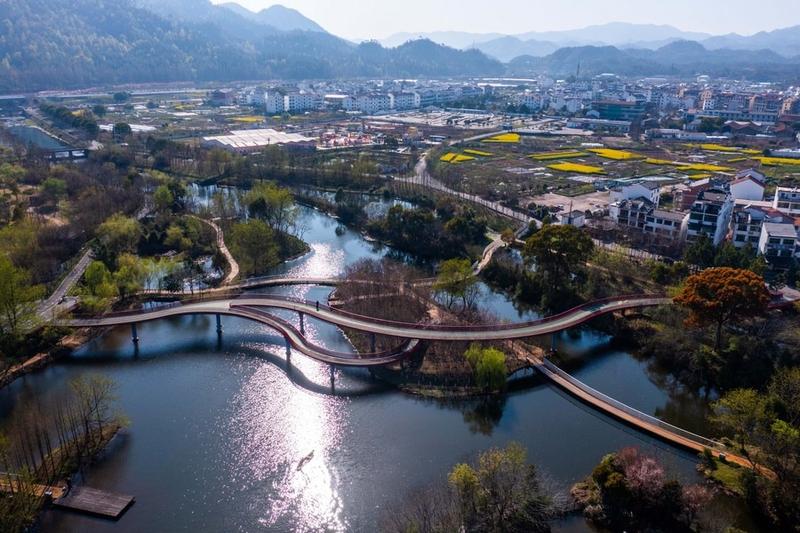 This aerial photo taken on March 14, 2023 shows a view of Cuihu lake in Pujiang County of Jinhua, east China's Zhejiang province. (PHOTO / XINHUA)
This aerial photo taken on March 14, 2023 shows a view of Cuihu lake in Pujiang County of Jinhua, east China's Zhejiang province. (PHOTO / XINHUA)
BEIJING - China's ecological and environmental quality continued to improve in 2022, according to a report from the State Council.
According to a report from the State Council, further efforts should be made in 2023 to promote new breakthroughs in pollution prevention and control in key areas, sectors and indicators
The PM2.5 density, a key indicator of air pollution, dropped 3.3 percent year-on-year to 29 micrograms per cubic meter, falling below 30 micrograms per cubic meter for the first time and has been continuously decreasing for nearly a decade, Minister of Ecology and Environment, Huang Runqiu, said when delivering the report at the ongoing session of the Standing Committee of the 14th National People's Congress.
ALSO READ: Renewable energy key way forward for green transition
The proportion of surface water at or above Grade III in the country's five-tier water quality system rose 3 percentage points year on year to 87.9 percent last year, while that of surface water below Grade V, the lowest level, stood at 0.7 percent, down 0.5 percentage points from 2021.
Meanwhile, environmental risks of soil were basically under control nationwide, and the worsening trend of soil pollution has been initially curbed.
Despite the improvement of the ecological environment in 2022, the task of achieving sustained improvement has become tougher, Huang said, adding that China still faces problems, including an unstable foundation, structural pressure, as well as inadequate law enforcement and supervision in the ecological and environmental sector.
ALSO READ: Green energy cooperation can spur pickup in ties
According to the report, further efforts should be made in 2023 to promote new breakthroughs in pollution prevention and control in key areas, sectors and indicators.


